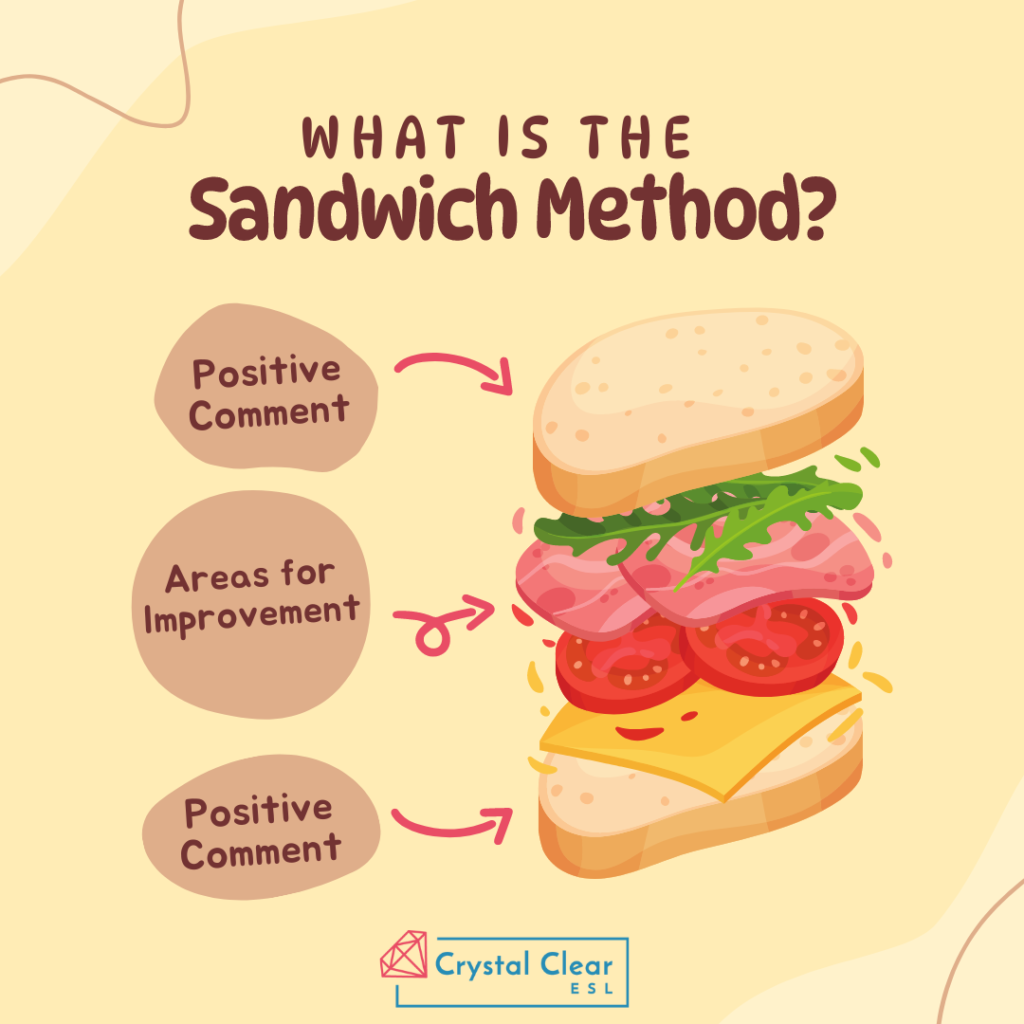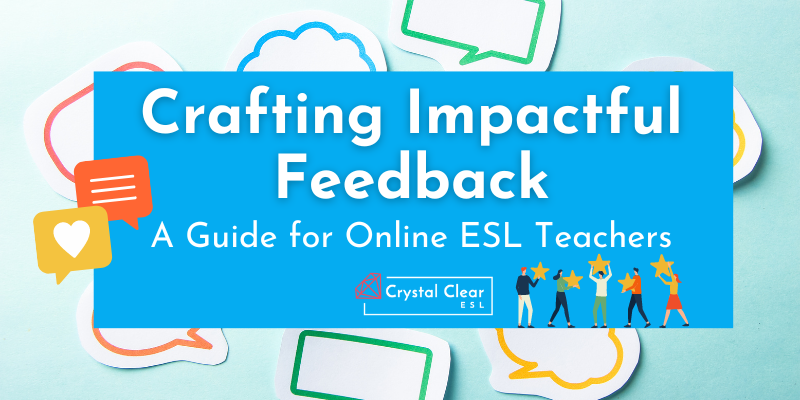Crafting Impactful Feedback: A Guide for Online ESL Teachers
As online educators, one of the most powerful tools we possess is the ability to provide constructive feedback. For ESL teachers, offering effective feedback is crucial for student development, and feedback plays a vital role in fostering a positive and engaging learning environment. In this blog, we’ll explore various strategies to enhance your feedback game to ensure your students understand their areas of improvement and feel motivated to succeed!
Do you feel like your feedback is falling on deaf ears? Then get ready to craft more impactful feedback that actually makes a difference!

Ways to Give Feedback:
👨👩👧 Direct to Parents:
You can communicate feedback about a student’s progress directly to parents, which helps build a strong teacher-parent partnership. Regular updates, whether through emails, texts, or parent-teacher meetings, ensure that parents are well-informed about their child’s progress and can support their child’s learning journey. Think of this feedback like a conversation and invite replies.
💻 Built-in Classroom Feedback:
Some online platforms, like ClassIn, have built-in feedback tools for timely and seamless communication. Feedback within a classroom platform provides real-time insights, making it convenient for teachers, students, and parents to track progress.
📝 Form Feedback:
Feedback forms are an organised and detailed way to document and share student progress. Your feedback form can cover various aspects, such as language skills, participation, and behaviour, offering a comprehensive view of a student’s performance. You can use tools like Canva and Google Forms to create a feedback template, which you fill in and send to parents after each lesson.
Click the button below to download our feedback form template for Canva and customise it as you need!
Tracking Feedback:
Consistency plays a crucial role in the realm of effective feedback, so it’s important to establish a system for tracking and analysing feedback over time. Whether you opt for a spreadsheet, direct communication, or leverage the built-in features of your teaching platform, maintaining a record of feedback will help you identify patterns of strengths and areas for improvement. This information is invaluable for tailoring your teaching to meet the unique needs of each student. Follow up on previous feedback by referring back to it and note any areas of progress or improvement. Unit assessments present an opportune time to schedule feedback and for teachers and parents to gauge student progress. Link feedback on assessments to the assessment outcomes and make mention of specific objectives that were met after the assessment.
🥪 The Sandwich Method: 🥪
Are your students hungry for more meaningful feedback? Use the sandwich method!
The sandwich method is a classic approach to providing constructive feedback, where an educator will sandwich the development points between two specific points of praise. Start with a positive comment (this is your top slice of bread), address an area for improvement (the meat, lettuce, and tomato of your feedback), and conclude with another positive note (the bottom slice of bread). The sandwich method helps balance criticism with encouragement, creating a more receptive atmosphere for students.

Key Aspects of Crafting Impactful Feedback:
1. Be Personal and Specific
Provide detailed and specific feedback rather than general comments. Personalised feedback will show students and parents that you are invested in their success and will enhance the effectiveness of your guidance. Don’t forget to link feedback comments to the learning objectives of a lesson or to a student’s learning goals. This will help students and parents see the relevance of feedback in achieving learning targets. Specific feedback is more actionable and helps the student or parent understand what aspects need to be improved. Remember to incorporate anecdotes from a lesson to add a personal touch to your feedback comments.
2. Use Positive Language:
Use positive language and frame feedback in a positive manner using the sandwich method to emphasise strengths before addressing areas for improvement. The use of positive language fosters a constructive and encouraging environment, making it more likely that a student will be motivated to work on enhancing their skills. Use a growth mindset approach by reinforcing that abilities and skills can be improved over time through consistent effort and practise. Encourage students to see feedback as an opportunity for growth rather than a criticism of their capabilities.
3. Offer Solutions and Strategies for Success:
Empower your students by giving them actionable suggestions for improvement as part of their feedback. Instead of just pointing out strengths and weaknesses, provide practical solutions and strategies the student can use to enhance their performance. Offer support, homework, or additional resources if needed.
4. Be Collaborative and Approachable:
Create an open line of communication between yourself, students, and parents. Allow students and parents to ask questions and discuss feedback after class; this facilitates a collaborative approach where parents can be involved in their child’s learning journey. Regular conference check-ins can provide additional opportunities for feedback and strategies for success. Encourage self-reflection by asking students to identify their own strengths and areas for improvement after a lesson.
5. Be Timely:
Prompt feedback allows students to make connections between their efforts in class and the outcomes. Remember to provide feedback as soon as possible after a lesson or assessment to ensure it remains relevant and helpful.

Effective feedback is ongoing and iterative, and mastering the art of constructive feedback requires dedication and adaptability. By incorporating methods such as the sandwich technique, utilising strategies for success, and personalising feedback, ESL teachers can create an environment that supports continuous improvement beyond the virtual classroom.








